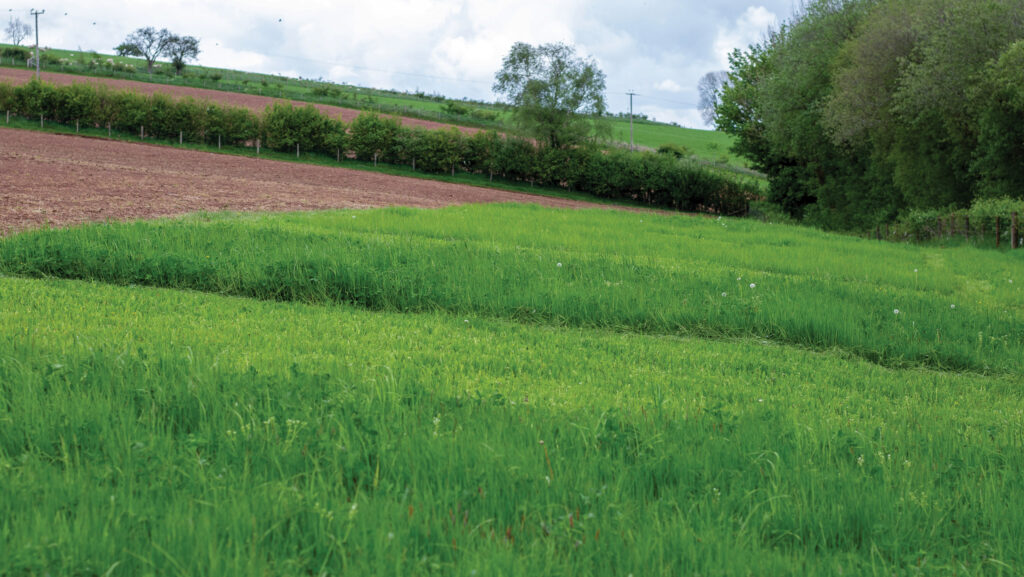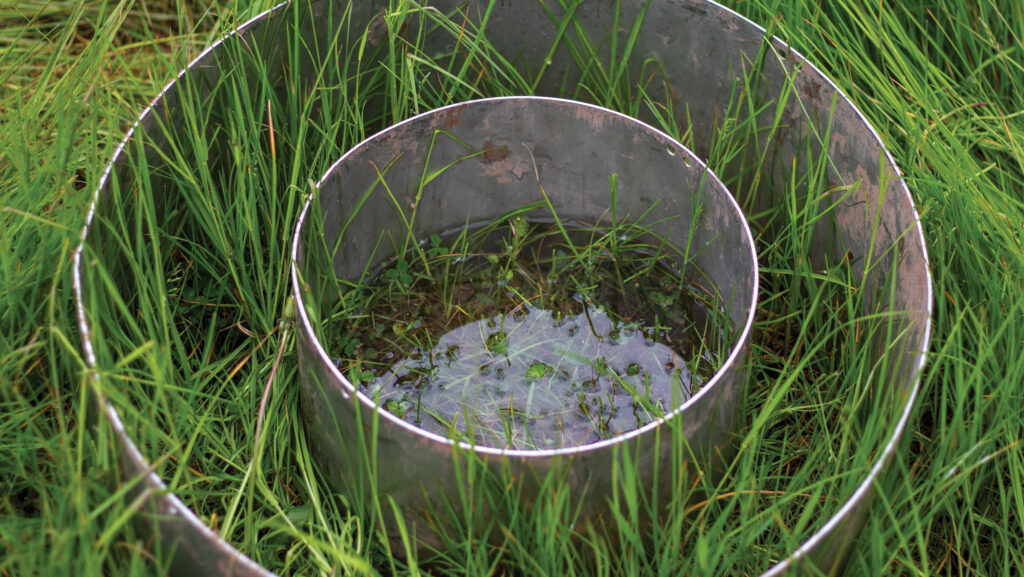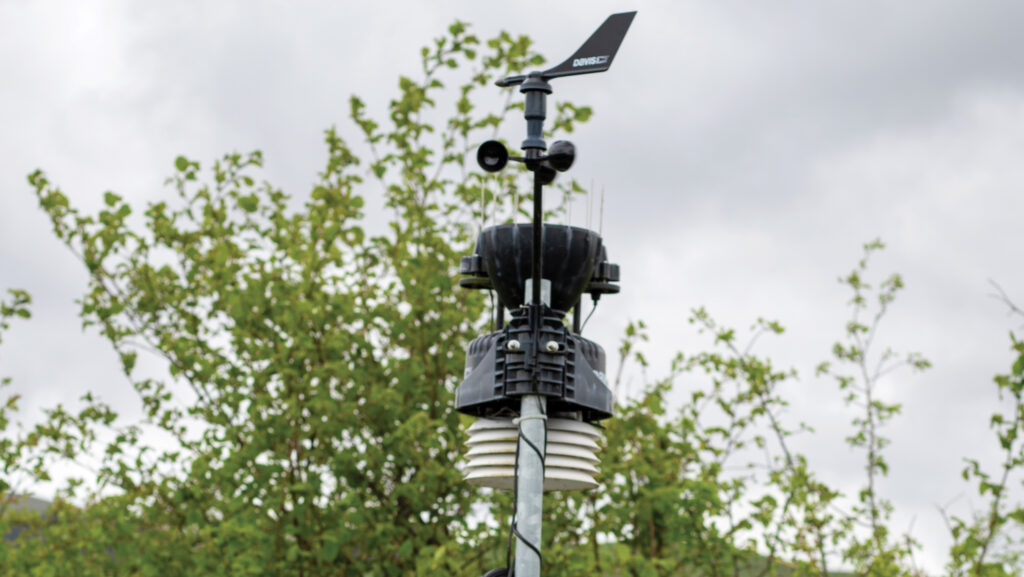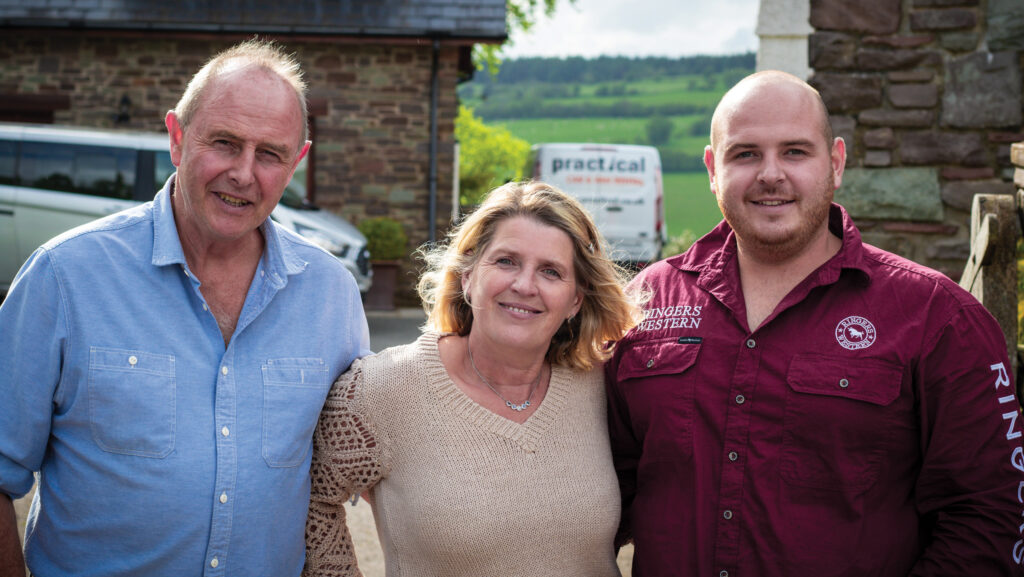How Brecon Beacons farmers are improving water quality
Establishing buffer strips, resting fields and using precision technology to aid the timing of nutrient applications could all help drive improvements in water quality, preliminary findings from a pioneer project show.
Breconshire farmer Keri Davies is one of seven directors of the Beacons Water Group – six of them farmers – who are trialling ways to improve water quality.
See also: Calving dairy improves water management with funding grants
Created nearly six years ago, the Beacons Water Group is a farmer-led community interest company, working in partnership with Welsh Water.
The project is part of the Brecon Beacons Mega Catchment programme.
Its purpose is to inform how land management changes can improve water quality and storage, reduce flooding and restore habitats, while allowing farmers to continue producing food.
The Brecon Beacons National Park is an important area because it provides almost half the drinking water supplied to Welsh Water’s three million customers.
Buffer zones and water infiltration
Through his involvement in the Beacons Water Group, Keri, who farms at Glwydcaenewydd Farm, Crai, near Brecon, is investigating how he can improve water infiltration and reduce run-off and water quality risks.
The farm study is part of a two-year project, Developing Productive Buffer, with the Institute of Biological, Environmental and Rural Sciences at Aberystwyth University, funded by Welsh Water.
Farm facts: Glwydcaenewydd Farm, Crai, near Brecon
- Organic, farming 121ha, including 4ha herbal leys undersown with peas and barley, 3ha peas and barley that will be crimped and sown with brassicas, and 9ha herbal leys (all herbal leys established under Growing for the Environment Scheme)
- 500 ewes
- 30 suckler cows
- Organic lambs sold to M&S and Tesco
- Organic stores sold at Brecon Market
- Diversifications include 100-bed holiday lets, production of Cascave Gin and a farm contracting business
- Renewables include ground-source heat pumps, eight 7.5kW air-source heat pumps to heat hot tubs, 100kW solar and 20kW thermal solar
- 2,286mm rainfall annually, with the farm rising to 293m above sea level
As part of this, the Davies family have established nine 9x6m replicated plots comprising various mixes, including perennial ryegrass, red clover and plantain.
Water infiltration rates are being monitored on the plots.
“We hope to demonstrate a simple solution to tackling run-off that doesn’t take land out of production.
“This could be a low-cost intervention done at scale,” explains Nigel Elgar, project manager for the Brecon Beacons Mega Catchment Programme: Welsh Water.

Buffer zones comprising different plant species are being tested to reduce run-off © Rhian Price
Alongside this, James Hawkins, head of monitoring at the Wye and Usk Foundation, is carrying out in-field water infiltration testing.
This is to understand how stock management and soil type affect soil structure and water infiltration rates at Glwydcaenewydd Farm and other farms within the catchment.
He is using a double-ring infiltrometer to assess differences in infiltration rates.
The rings are driven into the ground, water is poured into both rings, and a stopwatch and float are used to measure water percolation rates in the inner circle.

A double-ring infiltrometer is used to measure the rate at which water filters through the soil © Rhian Price
James is comparing fields that are set stocked, rotationally grazed and rested over winter.
On the Davies’ farm, results are already showing that rest periods – as part of a rotational grazing system – are beneficial. Infiltration rates recorded last summer were 126mm/hour.
Typically, they can drop as low as 5mm/hour during the winter, but on a field rested for two months in January and February, they only dipped slightly, to 120mm/hour, explains James.
He hopes the trial will help prescribe best grazing practices on farms, boosting soil structure and subsequent water infiltration rates to help prevent flooding and improve water quality.
“A 21-day rotation allows the grass time to recover, and we can see much higher infiltration rates, even in a high rainfall year,” adds James.
He says the benefit is twofold: “Once the water has percolated through the soil, it comes out at a much lower temperature, which has massive benefits for fish.
“The Crai has been monitored as the most successful salmon-spawning area in the Usk catchment,” he notes.
Nutrient applications

Climate data is supplied by four weather stations © Rhian Price
The six farms within Beacons Water Group are also using information from four weather stations, with additional sensors monitoring soil temperature, soil moisture and leaf moisture index, one of which is situated at Glwydcaenewydd.
Each farmer is using the Tywydd Tywi Weather app, which interprets data from the weather stations to create a “traffic-light system” to inform farmers if conditions are suitable for applying nutrients.
The aim is to maximise their utilisation and reduce diffuse pollution risks.
The app also helps farmers meet legislative requirements by recording weather and soil conditions at the time of application.
“We are on a mission to get 400 farmers using [the app] so we can put pressure on the Welsh government to use it, instead of having closed periods,” says Keri.
Future developments
He has been keen to explore how his 121ha (299-acre) organic farm can attract new funding streams by providing public goods.
“The climate crisis is a real thing, and we need to drive sustainability on our farms and look for alternative funding schemes,” Keri explains.
There is scope for farmers to get paid by insurance companies for reducing flooding, he adds.
Brecon Beacons National Park’s strategy and policy manager, Helen Lucocq, has been tasked with developing the Usk Catchment Partnership, funded by the Welsh government.
It is being co-designed by county councils in the catchment, the NFU, Farmers’ Union of Wales, Welsh Water, and Natural Resources Wales, as well as the Beacons Water Group.
Helen hopes the Beacons Water Group can help establish cluster groups in the Usk catchment to deliver peer-to-peer learning to farmers.
She believes a “boots-up” approach from landowners is far more effective than a regulation-led, top-down approach from the government.
“The only way we are going to resolve some of the issues is by working with our land managers because they are the stewards of the catchment,” she adds.
New funding streams at Glwydcaenewydd Farm
Keri Davies and his wife, Julie, have diversified their farm business considerably. They started with holiday lets 15 years ago and, more recently, began making Cascave Gin.
The expansion into different enterprises has allowed their three children, Reuben, Naomi, and Heidi, to get involved with the various enterprises.
“We’ve made the farm sustainable and labour efficient, so it doesn’t absorb all of our time, and we have time to develop other income streams,” says Keri.
The 500 ewes and 30 suckler cows remain core enterprises,
But with the removal of subsidy on the horizon, he is considering switching from Blackface and Friesland cross Dorset ewes to a hardier, lower maintenance ewe that can lamb outdoors.
He has also started crossing Stabiliser cows to Charolais and would like to finish progeny rather than sell them as stores.

Keri, Julia and Reuben Davies © Rhian Price
This article was written following a recent Farming Connect event at Glwydcaenewydd Farm
